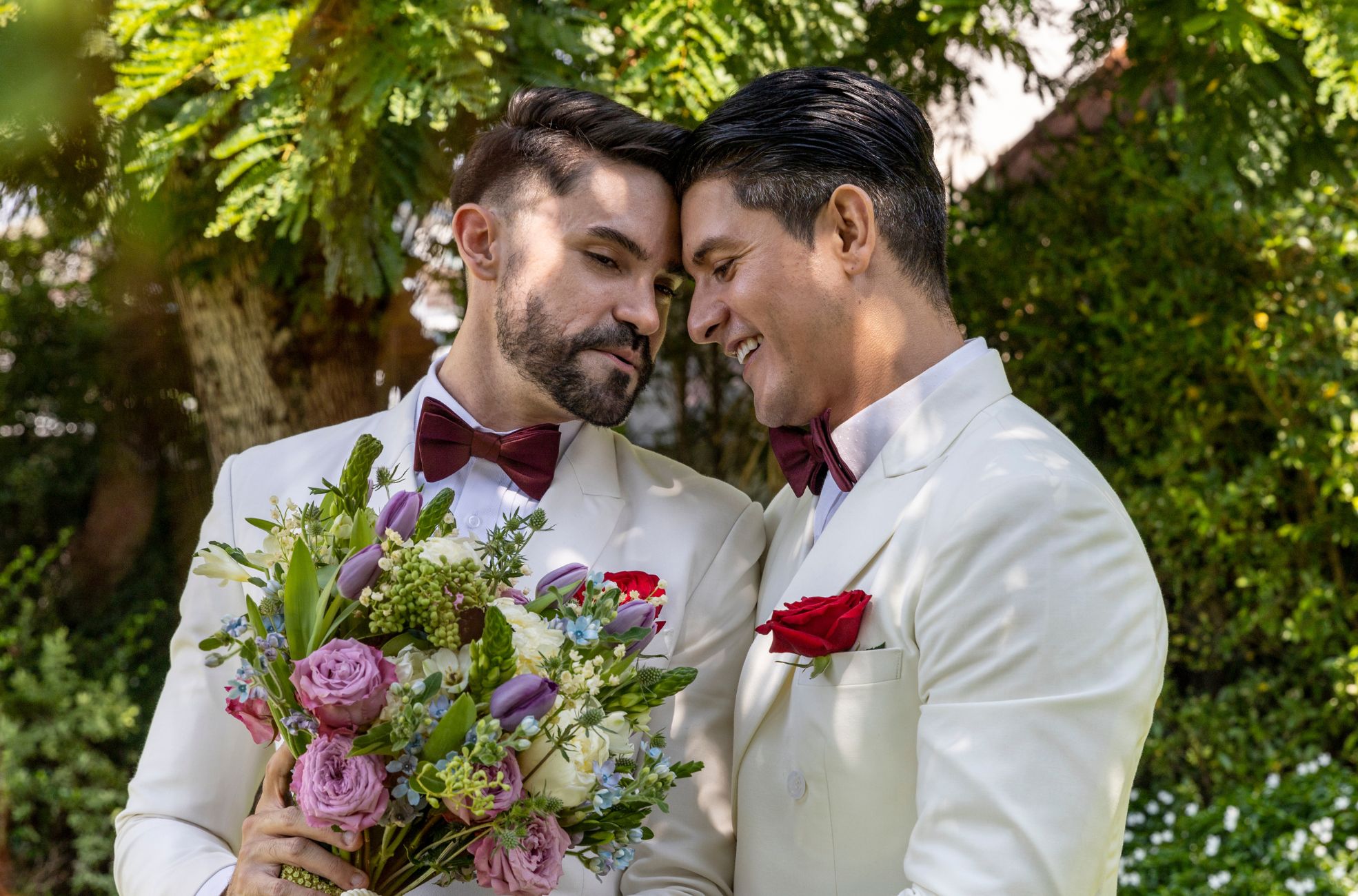A garden wedding is the epitome of romance, combining natural beauty with personal touches to create an unforgettable day. As you embark on this enchanting journey, there are numerous details to consider, from selecting a lush venue that reflects your vision to the nuances of outdoor catering. With each choice, you curate an experience that celebrates your union and harmonizes with the splendor of a natural backdrop.
We are here to simplify the essential considerations for designing a beautiful and seamless garden wedding, ensuring that your special day blossoms just as you’ve dreamed. From managing the vagaries of weather to selecting the perfect blooms to complement your theme, we’ll provide you with the insights needed to craft and host a celebration that is as stunning as it is memorable.
Choosing the Perfect Garden Venue
Factors to Consider for Garden Selection
When you dream of a garden wedding, the venue is key to making that romantic and elegant atmosphere a reality. Start by choosing a region that fits your vision of the ideal place for the perfect day. The climate of this region will influence the garden’s bloom cycles and how comfortable your guests are.
You’ll want to make a checklist to compare potential venues, looking at things like pricing, availability, and the natural beauty on offer. Lush floral arrangements and soft lighting can add to the garden’s charm as evening falls. Your decor palette should blend with the garden’s colors, enhancing the venue’s natural beauty.
Private vs. Public Garden Considerations
Choosing between a private and a public garden for your wedding depends on several factors. Private gardens usually give you exclusivity and control, and they might offer full-service options that can make planning easier. Public gardens, though, might be less expensive and feature iconic landscaped grounds.
However, public venues can have downsides like limited capacity, noise rules, and the presence of other people. No matter your choice, you’ll want to ensure the venue’s landscape is well-kept for your big day. Also, tackling any potential pest problems beforehand is a good idea.
Seasonal Impacts on Garden Weddings
The time of year you choose is a big part of a garden wedding, with each season offering a unique backdrop and vibe. The mild weather in early summer (November) and early autumn (March to early April) makes these months perfect for outdoor celebrations.
In contrast, the height of summer (December to February) can be too hot, and winter (June to August) might be too cold. It’s smart to have backup plans for bad weather. Having indoor options or pavilions can keep your date or celebration on track no matter what the weather throws your way.
Accessibility for Guests
Making sure your garden wedding venue is accessible is crucial for making sure everyone can come and have a great time. When you’re looking at venues, think about how easy it is for guests with mobility issues to get around. This could be elderly, injured or disabled guests, pregnant guests or if you’re having children attend in prams. Especially during months prone to heavy rainfall or flooding, as you don’t want flooding or muddy ground to affect your special day. You’ll also want to check that there are clean and sanitary restrooms.
Remember to confirm there’s electricity for things like music, and look into nearby places to stay, especially if the venue is out of the way. By focusing on your guests’ comfort and accessibility, you’re setting the stage for a joyful and welcoming event for everyone.
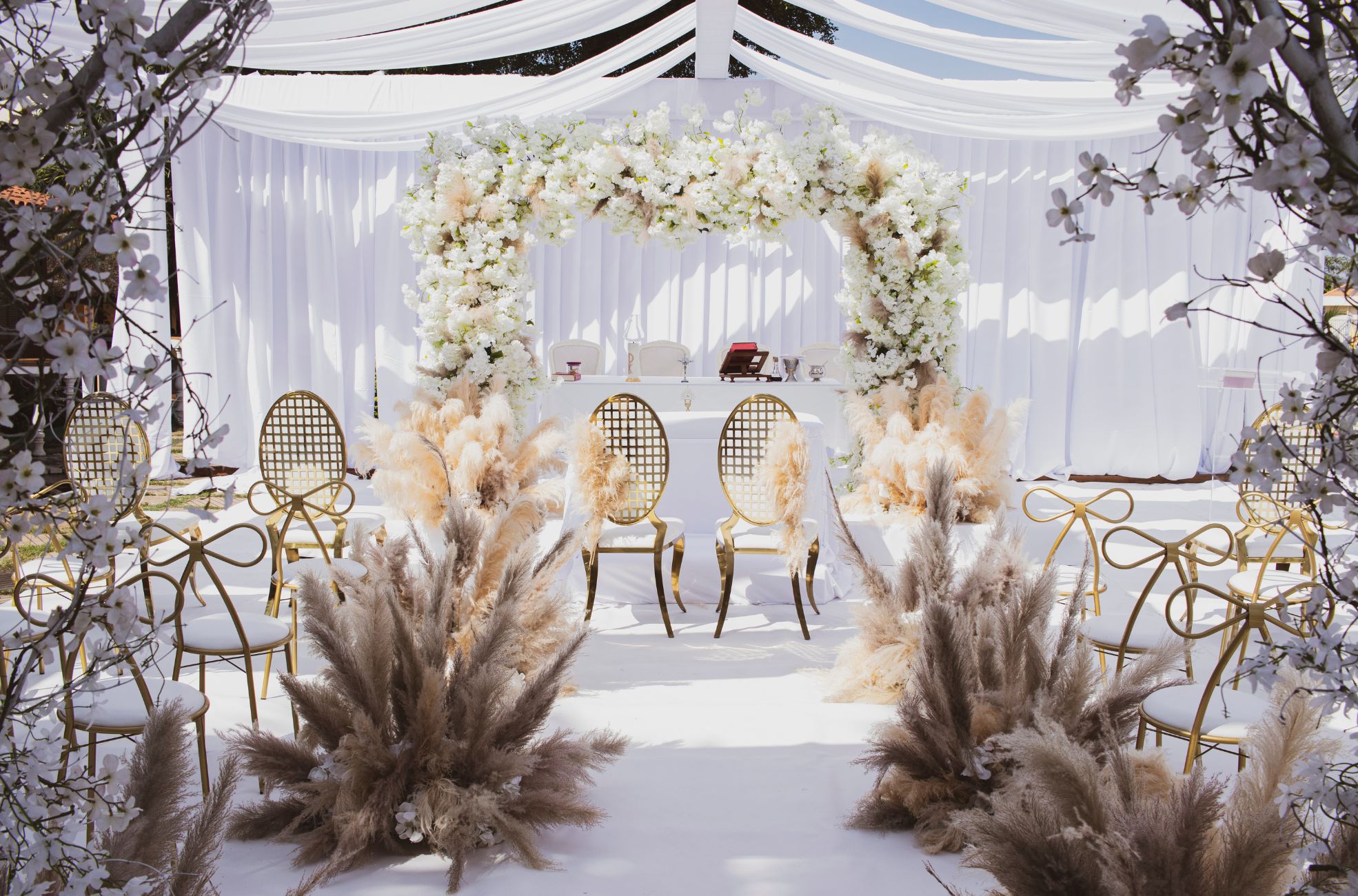
Designing Your Garden Wedding Theme
Selecting a Color Palette
Initiating the design process involves selecting a color palette that will dictate the visual elements of decorating your celebration. Begin with one or two dominant colors that resonate with your personal taste or the inherent hues of the garden.
Incorporate shades to complement these and a neutral to provide balance. Consider a metallic accent for sophistication, applying it judiciously to create focal points.
Drawing inspiration from the venue is beneficial. For instance, a wedding at a historic building could suggest a palette that encapsulates both romance and tradition, such as sage, French blue, and pale pink, complemented by gold and cream. Seasonal influences can also guide your color choices, with a spring event featuring vibrant purples, peaches, greens, and pinks.
Floral Arrangements and Natural Decor
Floral arrangements and natural decor should seamlessly integrate with the garden setting. The inherent beauty of the venue often reduces the need for additional adornments. Select flowers that align with your color scheme, and consider the availability of certain varieties during your wedding season.
Develop a plan to address the presence of insects. Discuss with the venue manager or caterer their pest control measures, which might include natural repellents or treatments before the event. For example, citronella and tea tree vegetation can provide a natural mosquito deterrent whilst also looking decorative if displayed correctly. If you’re managing the venue independently, prepare an emergency kit and a contingency plan for any unforeseen encounters with wildlife (such as insects, native reptiles or native birds).
Furniture and Layout for Garden Settings
Furniture selection and space arrangement are pivotal in transforming a garden into a personalized and practical venue. Work with your event designer team to establish zones that reflect your style, from contemporary seating to traditional setups. Incorporating elements like lattice dividers, potted greenery, or informal seating options such as hay bales, can uniquely contrast the garden’s elegance.
Account for weather-related contingencies (wind, rainfall, or surprise storms) with provisions such as umbrellas, shelters, or heating solutions. These features fulfill practical needs and contribute to the whole event space’s design, maintaining the aesthetic while prioritizing guest comfort.
Lighting to Enhance the Atmosphere
Light plays a crucial role in maintaining the garden’s enchanting ambiance as daylight fades. Thoughtful lighting can accentuate the garden’s features, complement your decor, and establish the desired mood. Consider lighting options that will harmonize with your chosen colors and theme, ensuring a smooth transition into the evening that still highlights the venue’s charm. LED or Solar lighting as string lights or in-ground garden lighting and candle-lit lanterns on the ground or hung from tree branches can provide intimate lighting.
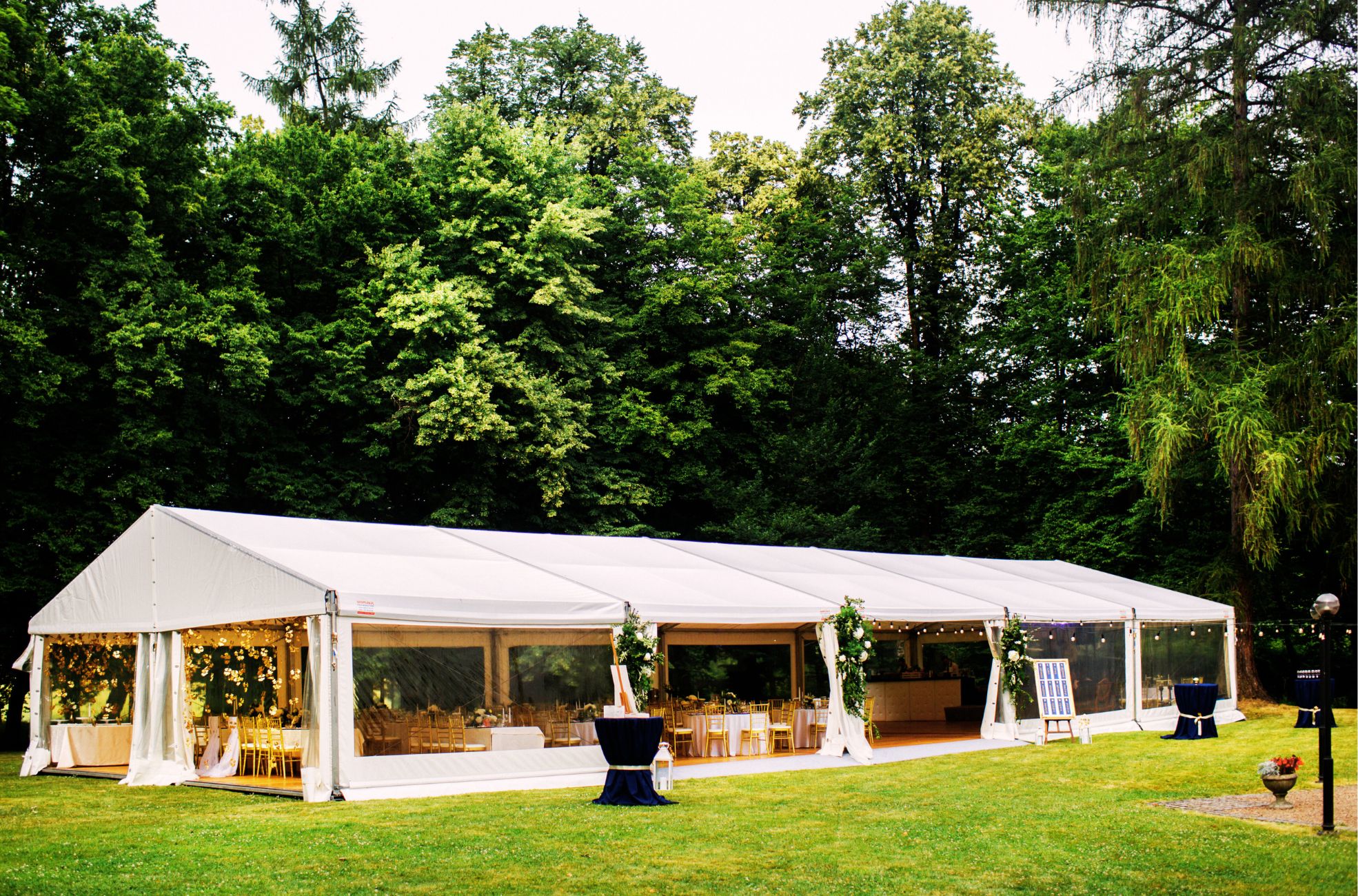
Planning for the Weather
Backup Plans for Rain or Extreme Conditions
Considering the weather’s unpredictability, it’s prudent to have a contingency strategy. Wedding professionals always highlight the importance of having an alternative plan, such as securing a secondary indoor location or a marquee on standby. Australian companies, such as Hampton Event Hire, offer many selections.
A marquee can be equipped with transparent panels to maintain the connection with the outdoors. Reserving a marquee or event canopy when you book your reception venue ensures availability on the day. Wedding planners are instrumental in devising and implementing these strategies.
They may alter the schedule or rearrange the event’s showroom layout if necessary. Additionally, wedding insurance can mitigate financial losses due to weather disruptions.
Comfort Considerations for Heat or Cold
Ensuring guest comfort is paramount, particularly when dealing with temperature extremes. Creating shaded areas with canopies and chairs or using natural tree shading is advisable for warmer days. Providing refreshment stations under a tent to cover beverages and snacks is also beneficial.
Portable fans, misting systems, and cooling refreshment towels can offer relief from the heat, which is vital for vulnerable guests. Consider adding heaters, fire pits, blankets, and warm refreshments for chillier conditions.
Recognizing symptoms of heat stress is essential for guest safety. Small gestures, such as distributing sunglasses, sunscreen, or paper fans, can significantly enhance comfort.
Tenting, Marquees, and Coverage Options
Tenting solutions, such as a portable marquee or gazebo, are versatile solutions. They provide protection from precipitation and a cozy ambiance in cooler conditions or a shaded area during hot, sunny weather. Choose a tent with sidewalls to shield against wind and precipitation. Ensure the tent or marquee is elevated to prevent water accumulation.
Incorporating a rented dance floor can prevent the ground from becoming soggy. Temperature control is also crucial; heaters may be necessary in cold weather, while fans can offer relief on warmer days. Communicating the tent details to guests and service providers is vital for a smooth experience.
Ensure these backup plans are still easily accessible to all guests and to any wait staff, and ensure they are also close to bathroom facilities. For events taking place in rainy weather, sawdust and straw or textured outdoor floor runners can be used on natural ground to prevent guests from slipping on wet surfaces.
Seasonal Flower and Plant Recommendations
Choosing appropriate flowers can accentuate the charm of a garden wedding, with the season playing a role in selection.
Popular wedding flower choices depend on what is available during which season. If you want specific flowers in bloom for your outdoor venue or for floral arrangements, it is important to know which species are available during which seasons.
For the majority of Australia, these are the popular flowers available at most florists for bouquets and decorative arrangements:
Summer
- Standard Roses
- David Austin Roses
- Daisies
- Dahlias
- Peonies
- Hydrangeas
- Delphinium
- Snapdragons
- Lisianthus
- Lavender
- Kangaroo Paw
- Cosmos
- Freesias
- Water Lilies
- Proteas
- Scabiosa
- Zinnias
Autumn
- Tulips (these may not be available for warmer states)
- Lisianthus
- Chrysanthemum
- David Austin Roses
- Garden Roses
- Iris
- Hyacinth
- Dahlias
- Gardenia
- Phalaenopsis Orchids
- Silver Suede
- Cornflowers
- Calla Lilies
- Camellias
Winter
- Poppies
- Camellias
- Hyacinths
- Iris
- Glass House Roses
- Ranunculus (late winter)
- Helleborus
- Sweet Pea
- Blushing Bride
- Standard Roses
- Queen Anne’s Lace
- After Dark Foliage
- Blushing Brides
- Daffodils
- Lavender
- Leucodendron
Spring
- Daffodils
- Daisies
- Peonies (in cooler states only)
- Freesias
- Gardenia Blooms (cooler states only)
- Poppies
- Standard Roses
- David Austin Roses
- Lisianthus
- Jasmine
- Lilac
- Lily of the Valley
- Bouvardia
- Sweet Pea
- Stock
- Carnations
- Lavender
- Ranunculus
- Waratah
- Snapdragons
- Cornflowers
Opting for seasonal blooms ensures their availability and contributes to the event’s harmony. When considering flowers, it is always advisable to ensure wedding guests do not have allergies to certain fragrances. For instance, (jasmine is a common allergen for hayfever sufferers) and pollen (such as from lilies) are removed to avoid staining light wedding attire!
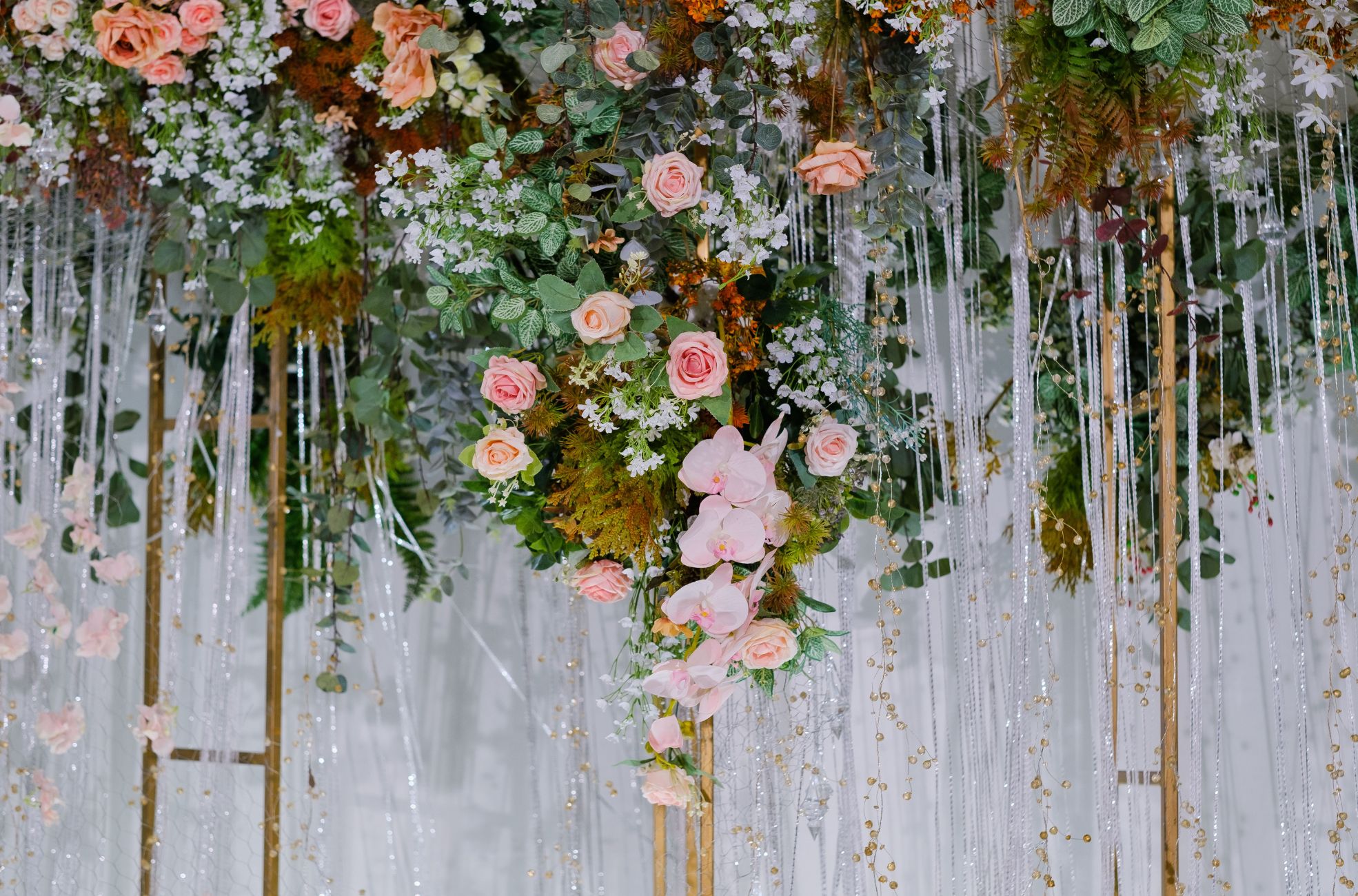
Catering and Cuisine Considerations
Menu Ideas for an Outdoor Setting
Crafting a menu for your garden wedding requires attention to the season and setting. When choosing your catering options, opt for light dishes that will stay fresh in the summer heat, steering clear of overly complex or heavy options. Incorporate fresh herbs, fruits like berries and melons, and other seasonal produce to emphasize the season’s bounty.
Choose appetizers and entrees that will be refreshing in the outdoor environment. Sushi, seafood stations, and salads with leafy greens such as rocket, baby spinach, or kale are both appetizing and appropriate for the garden context.
For the cooler months, warm dishes which can easy be made gluten-free and vegan-friendly (sush as curries or italian pastas), are a great choice, as they can be easily kept warm and served with a side of bread.
Interactive food stations, like grazing tables, allow guests to sample a variety of fare while socializing. This approach encourages interaction and lets guests savor the array of options. Australian companies, such as Platters and Blooms, offer themed grazing table catering with added botanical decorative touches.
Logistics of Outdoor Food Service
The first step is selecting a caterer who aligns with your vision and budget. Provide them with the final guest count and contact them promptly to facilitate their preparations.
The caterer will require appropriate equipment on site and may need to rent additional items. Collaborate with the venue manager to ensure the setup complies with venue policies. Coordination with other vendors is key to a seamless event.
Monitoring the catering service throughout the event is crucial to resolve any issues and ensure guest satisfaction promptly.
Garden-Fresh Ingredients and Edible Flowers
Incorporating ingredients straight from the garden into your menu brings a touch of freshness and connects the cuisine to the surroundings. Utilizing speed-scratch components like pestos or fresh herbs can streamline kitchen operations while preserving the flavors of fresh produce. Edible flowers such as citrus blossoms (for savory or sweet dishes), garlic flowers, parsley blossoms, or chive flowers (for savory dishes), and edible rose petals, nasturtium flowers, or violets (for desserts or cocktails) enhance the presentation and taste of your dishes.
Source these flowers carefully, verifying they are organic and safe for consumption. Avoid using flowers or plants that are not suitable for consumption due to their flavor, if pesticides have been used, or their texture. When uncertain, it is best to leave them out entirely and opt for a safer option, such as lemons, limes, or herb leaves as a garnish.
Beverage Stations and Outdoor Bars
Beverage stations and outdoor bars add a charming element to garden weddings, providing a selection of drinks that match the décor and theme. Style these areas with rustic elements, portable bars, or repurposed furniture to reflect your personal taste. Feature cocktails or mocktails that use the same fresh ingredients, such as fruits or vegetables, such as cucumbers, as well as edible flowers and herb leaves, which will complement your menu.
This approach creates a unified and immersive experience for attendees. Confirm that all garnishes are consumable and sourced from reputable suppliers, such as local markets, trusted online retailers, or your own garden.
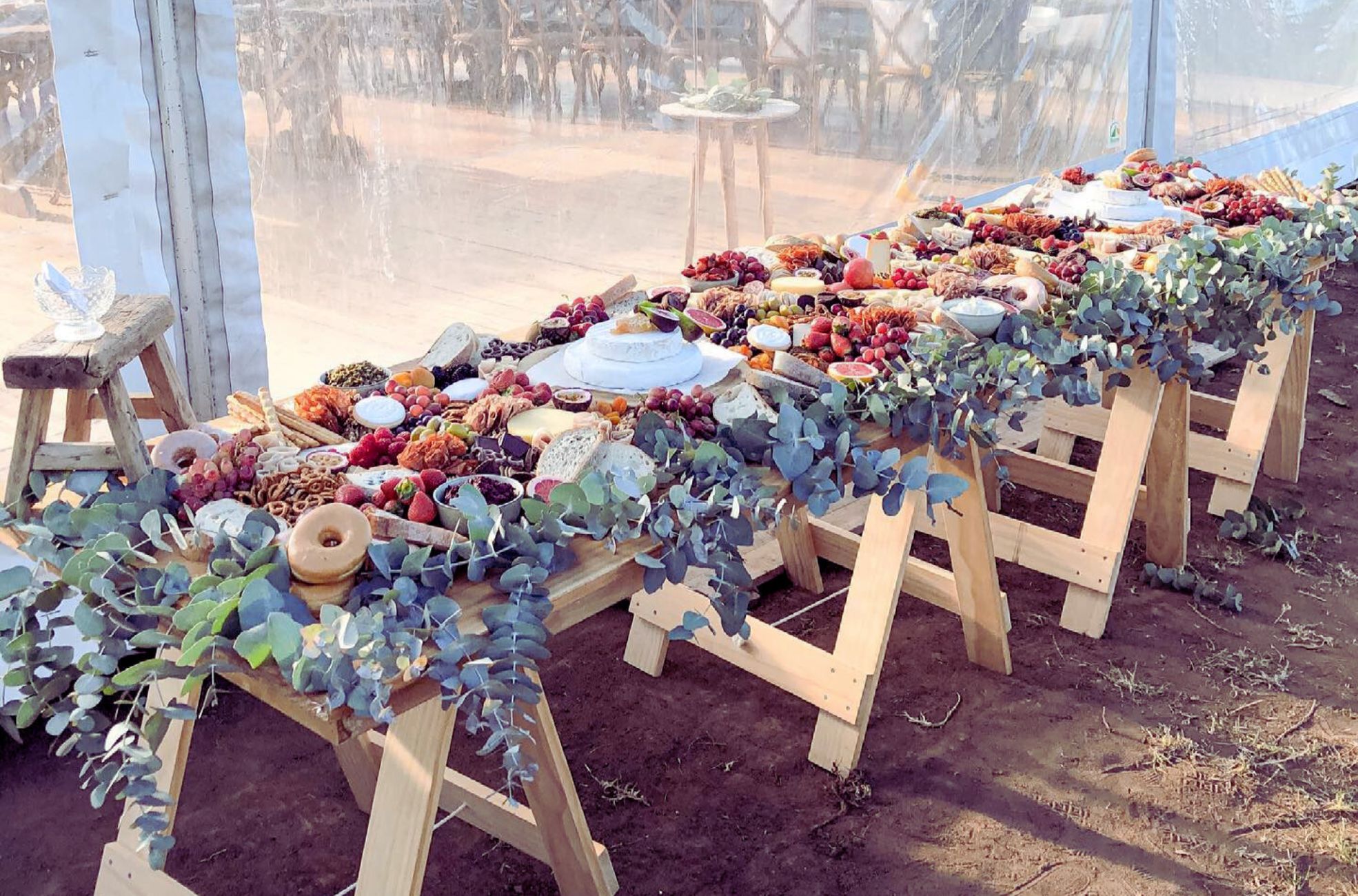
Capturing the Moment: Photography Tips
Natural Light and Time of Day
Early morning’s soft, gentle light is often considered ideal for outdoor wedding photography. It provides a directional light that minimizes harsh shadows. Conversely, the golden hour—the period just before sunset—bathes the scene in a warm, flattering glow.
While late morning and late afternoon can also yield beautiful results, high noon is typically less desirable due to the potential for stark shadows on faces. Overcast days offer a natural diffusion of light that can soften these issues.
Nighttime presents its own challenges, with low light levels requiring your skill in blending ambient and artificial light sources to achieve evenly lit faces. Creating a wedding day timeline with your photographer ensures you can take advantage of the best light conditions for your photographs.
Choosing the Right Photographer for Outdoor Settings
Selecting a photographer who’s adept at navigating the intricacies of outdoor lighting is key. A professional will have the experience to create light with artificial sources when necessary and balance it with the available ambient light.
It’s important to view full galleries of a photographer’s previous weddings to get a sense of their range and style. An engagement session can serve as a rehearsal or a trial run, allowing you to experience their approach and build rapport.
When discussing your wedding with potential photographers, ask about their approach to wedding day photography and the post-production process. It’s also important to be clear about permissions for photo rights and legal aspects. Look for a photographer who’s not only skilled but also personable. They’ll be by your side throughout the day, capturing your emotions and the essence of your celebration.
Must-Have Garden Wedding Shots
Creating a short list and sharing it with others is a good idea to ensure none of your special moments are missed. This checklist can include key moments like the exchange of vows, the first kiss, and candid interactions between guests. A good photographer will look for details.
It’s also smart to appoint someone from the wedding party to assist with last-minute touch-ups and help organize guests for group shots. This person can be equipped with an emergency kit containing items like lipstick and scissors for any unforeseen adjustments.
Listening to your photographer’s guidance is essential; they’re skilled at judging the quality of light and determining if any adjustments to the scene are needed.
Using the Garden’s Features as Photo Backdrops
Gardens offer a plethora of natural backdrops that can enhance the beauty of your wedding photos. From lush greenery to blooming flowers, the features of a garden can add a romantic and organic touch to your images. A photographer with a keen eye will anticipate emotional moments and capture them discreetly, using the natural environment to frame these memories. They’ll blend in with the guests, using a telephoto lens for candid shots and avoiding intrusive directing or posing during intimate moments.
In post-processing, the focus should be on maintaining the authenticity of the images, enhancing colors and tones while preserving the genuine emotions captured. By building a connection with the couple and guests, a wedding ceremony photographer can capture the unguarded expressions that truly reflect the joy and love of the day.
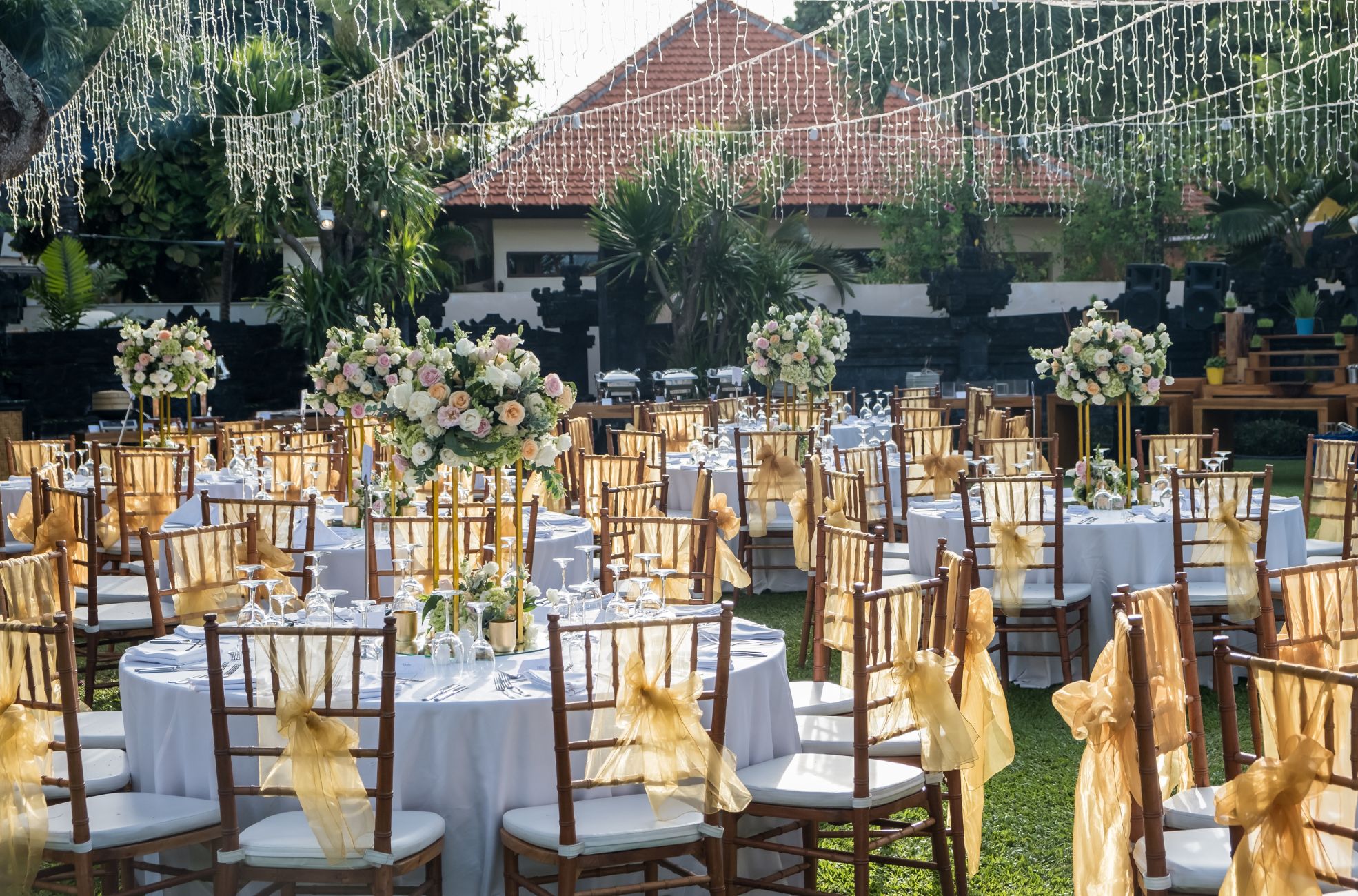
Your Dream Garden Wedding Awaits
Embarking on the garden wedding journey blends the profound beauty of nature with the intimate celebration of love. As you weave together each element—from the perfect blooms that echo the season’s whisper to the soft glow of twilight enhancing every precious smile—remember that careful attention to detail will bring your enchanting day to life.
With the right venue, a sprinkle of thoughtful planning, and a dash of adaptability for whatever the weather may hold, your garden wedding is set to be as vibrant and memorable as the bouquet in your hands. May your dream wedding day be filled with the sweet fragrance of flowers, the warmth of loved ones, and a lifetime of happiness that grows from this moment forward. Your perfect garden wedding isn’t just a dream—it’s just within reach — waiting to bloom brilliantly under your loving touch.

